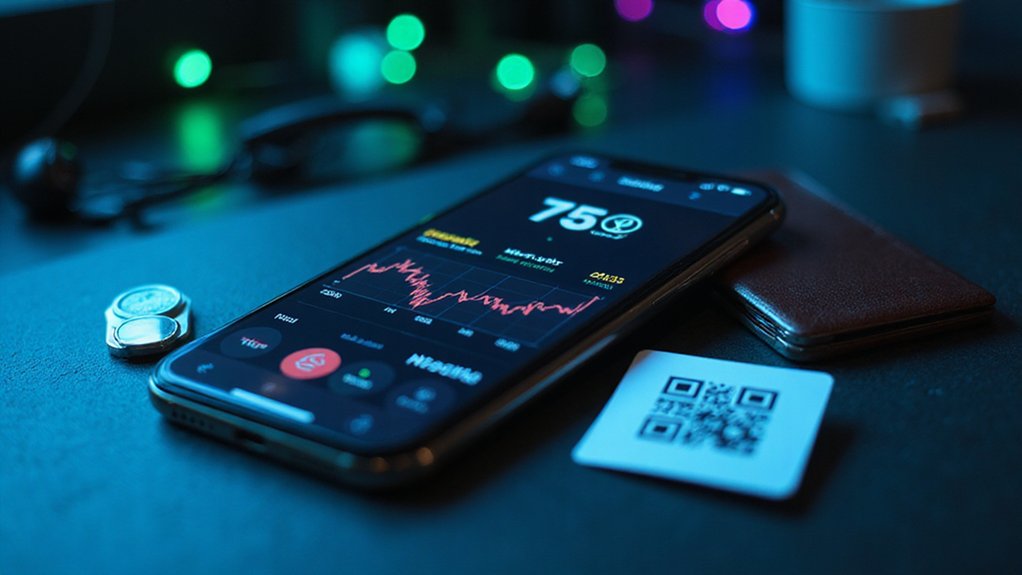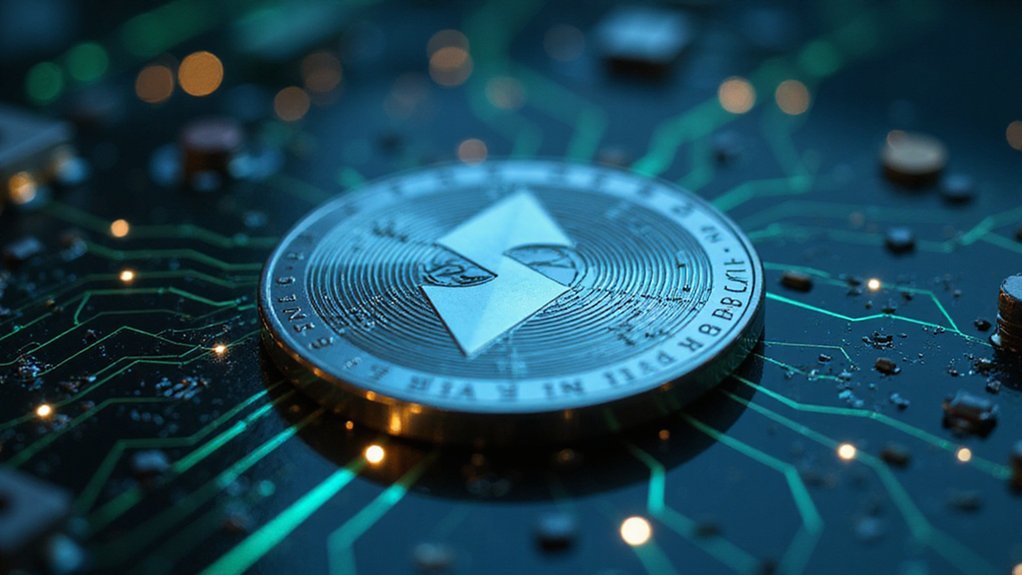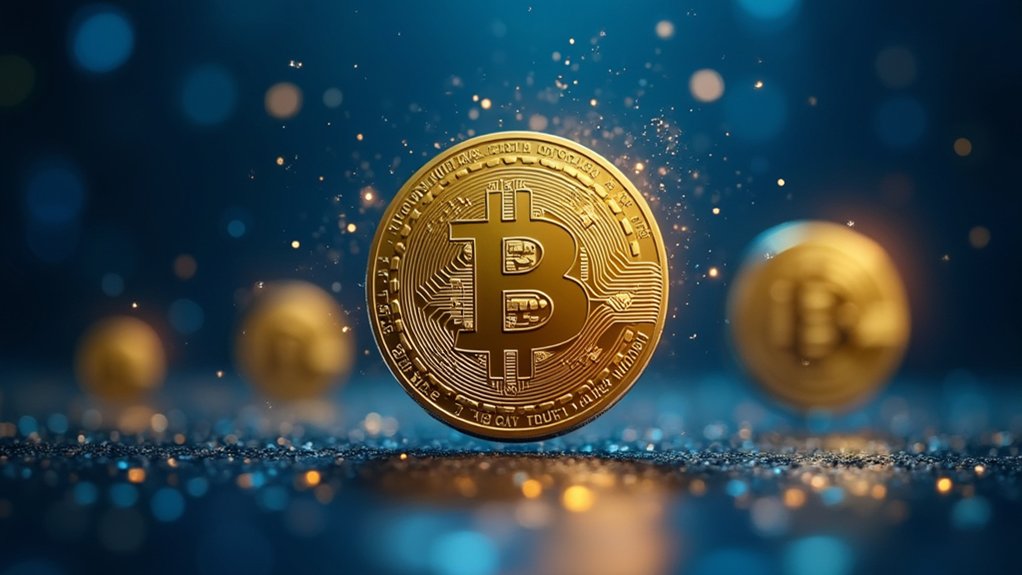A DeFi wallet functions as the digital fortress of financial autonomy, allowing users to interact with decentralized applications while maintaining exclusive control of their assets. Unlike centralized exchanges (which notoriously implode with alarming regularity), these non-custodial instruments employ cryptographic key pairs that users—and only users—possess. They facilitate everything from basic transfers to complex yield farming maneuvers across multiple blockchains. The security responsibility, however, falls squarely on one’s shoulders.

A DeFi wallet represents the digital equivalent of financial autonomy in an ecosystem where intermediaries have traditionally maintained their stranglehold on asset custody. Unlike their centralized counterparts—which retain cryptographic keys and, consequently, control over user assets—these non-custodial instruments employ asymmetric cryptography to guarantee users maintain exclusive possession of their private keys.
The distinction proves fundamental: when exchanges collapse (a seemingly cyclical phenomenon in this nascent industry), self-custodied assets remain unscathed.
Self-custody represents financial sovereignty’s ultimate expression—immune to institutional collapse, insulated from systemic contagion.
These technological implements function through cryptographic orchestration, generating a hierarchical deterministic structure from a seed phrase—typically 12-24 mnemonic words that, when lost, render assets irretrievably inaccessible.
The wallet employs these seeds to derive private keys, which subsequently sign transactions and broadcast them to respective blockchain networks.
This architecture enables everything from quotidian transfers to complex interactions with decentralized applications, where users might engage in yield farming, token swaps, or governance participation.
The ecosystem presents diverse wallet manifestations. Hardware variants (Ledger, Trezor) store keys in air-gapped devices, providing formidable security through physical isolation. Software alternatives offer convenience through browser extensions or mobile applications, albeit with elevated attack vectors. Paper wallets—analog solutions in a digital domain—provide cold storage options for the particularly security-conscious.
Self-custody wallets like Coinbase Wallet serve as a gateway to Web3, allowing users to interact with decentralized finance while maintaining complete control over their digital assets.
While self-custody eliminates counterparty risk, it introduces user-responsibility perils that many find disconcerting.
The irreversibility of blockchain transactions means erroneous transfers become permanent donations; phishing schemes targeting extension users proliferate with alarming sophistication; and smart contract vulnerabilities can drain funds with algorithmic efficiency.
The system operates without safety nets—a feature advertised as liberation but experienced by many as existential financial anxiety.
Securing your wallet properly includes creating a strong password to protect unauthorized access to your funds.
Modern implementations increasingly incorporate multi-chain support, recognizing the fragmented blockchain landscape requires interoperability.
Multi-party computation technologies further enhance security paradigms by distributing key fragments across multiple locations, reducing single points of failure.
These innovations continue transforming wallets from simple key managers into extensive financial interfaces—portals to a parallel financial system operating beyond traditional boundaries.
Popular options include MetaMask, tastycrypto, Coinbase Wallet, and others that collectively facilitate access to the DeFi market valued at approximately $90 billion as of August 2024.
Frequently Asked Questions
How Secure Are Defi Wallets Compared to Centralized Exchanges?
DeFi wallets generally offer superior security through non-custodial control—users maintain their private keys rather than entrusting them to third parties (a distinction that cannot be overstated).
While centralized exchanges present convenient honeypots for hackers, DeFi’s security hinges largely on user competence.
The trade-off is clear: exchanges offer regulatory oversight but bear catastrophic hack histories; DeFi wallets provide sovereignty but demand vigilance.
Hardware wallet integration and proper key management remain paramount for those venturing into decentralized finance.
Can I Recover My Defi Wallet if I Lose My Seed Phrase?
Recovering a DeFi wallet without a seed phrase is, frankly, an exercise in futility.
While some wallets offer alternative recovery methods—private keys, encrypted backups, or social recovery arrangements—the stark reality remains that seedless recovery prospects are dismal.
Technical approaches exist for partially remembered phrases (offline brute-force tools being the least desperate option), but the industry’s $140 billion Bitcoin graveyard serves as a sobering reminder: proper seed phrase management isn’t optional—it’s existential.
What Fees Are Associated With Using Defi Wallets?
DeFi wallet users encounter a veritable smorgasbord of fees: network transaction fees (those pesky validator payments), DEX trading fees when swapping tokens, gas fees that fluctuate with network congestion, token approval costs for first-time asset interactions, and cross-chain transfer fees.
Smart users minimize these costs by batching transactions, choosing off-peak times, and utilizing Layer-2 solutions.
Failed transactions—the bane of crypto enthusiasts—still incur fees despite their fruitlessness, an irony not lost on wallet-clutching veterans.
Can Defi Wallets Interact With Traditional Banking Systems?
DeFi wallets increasingly interact with traditional banking systems, albeit through intermediary services rather than direct connections.
Integration occurs via custody solutions, banking-as-a-service platforms, and off-ramp exchanges that facilitate crypto-to-fiat conversions.
Users can initiate wallet-to-bank transactions, secure collateralized loans using crypto assets, and access tokenized versions of traditional financial instruments.
However, this interoperability remains constrained by regulatory fragmentation and standardization challenges that create friction points at the crypto-banking interface.
Are Defi Wallet Transactions Traceable by Government Authorities?
DeFi wallet transactions are indeed traceable by government authorities, despite the persistent myth of crypto anonymity.
Blockchain’s public ledger nature guarantees all transactions remain permanently visible—a feature that, ironically, facilitates rather than hinders surveillance.
While tracking complex DeFi activities presents challenges, authorities employ sophisticated blockchain analytics to follow fund flows, particularly when assets move to regulated exchanges where KYC requirements create an identity bridge.
Privacy tools exist but increasingly attract regulatory scrutiny themselves.









